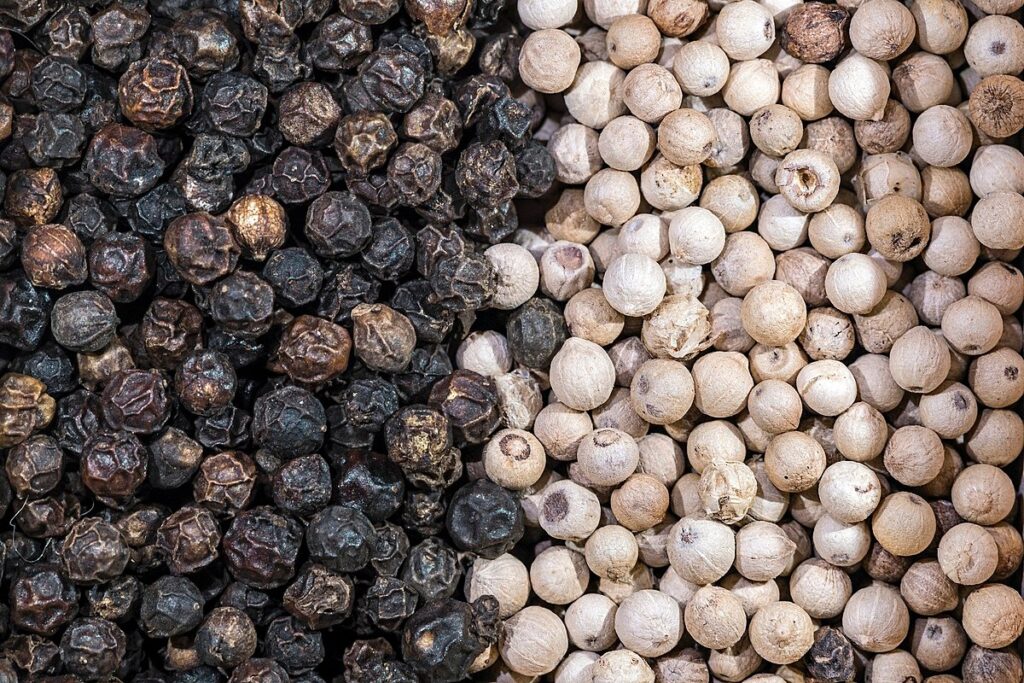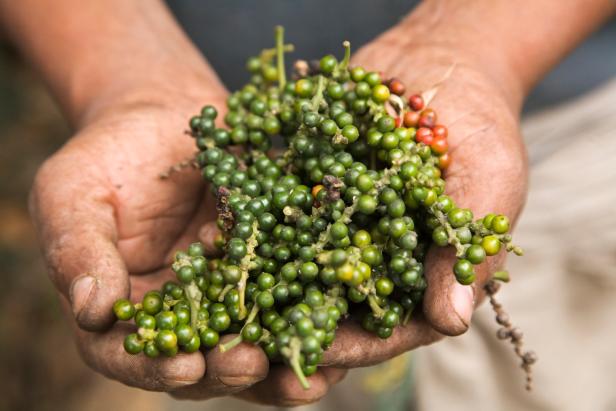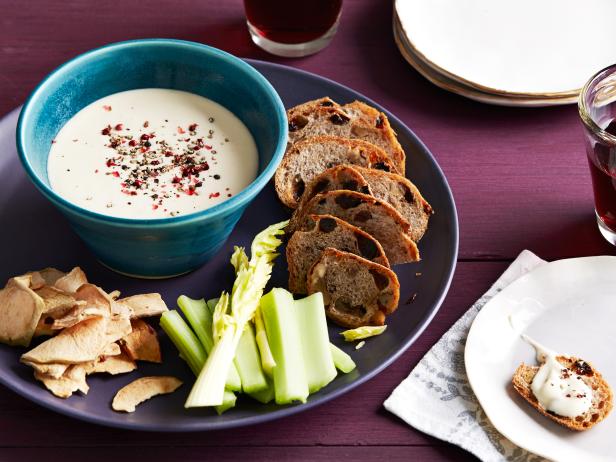White Pepper& Black Pepper.

Despite coming from the same plant, black and white peppers have different flavors and looks because of how they are dried.
Origin
The fresh berries of the piper nigrum pepper vine, a plant indigenous to South and Southeast Asia, are used to make both black and white pepper. The interior pit of peppers, which contains piperine, an antioxidant component, is present in both varieties of pepper. Our tongue’s temperature receptors are triggered by piperine, which produces heat or a spicy taste.
Appearance
According to Frisch, “the majority of the other savory and sweet flavors originate from the pepper fruit, which wrinkles and turns dark as it ripens, giving black pepper its black appearance.”
The color variation can be explained by the removal of the white pepper’s skin before it dries.
Flavor
While white pepper has a more earthy flavor, black pepper is usually spicier. This is because the skins of white pepper are removed by soaking them in water; the length of the soaking process affects the depth of the fermented flavor, which can range from mild to foul.
Taste differences can also be influenced by terroir, varietal, and farming practices, according to Frisch. For instance, our Zanzibar Black Pepper is unusual for black pepper—it grows largely wild in the jungle and is sandier and dryer than you would normally find. As a result, the plant struggles to survive, giving the pepper a very strong flavor. It smells like lemon zest and hits you with a strong heat.

Anders Blomqvist/Getty Images
What and Black pepper are grown on a central stalk in little bunches resembling grapes. Raindrops pollinate the tiny white blossoms on the stalk, and each bloom develops into a single pepper, according to Frisch. The greatest pepper farms grow their plants on tall, thin trees because the plant is a climbing vine. Lower-quality pepper is cultivated by scrambling up cinderblock stacks or concrete poles.
Like tomatoes, all peppers begin as green and mature into orange and red hues. Because the sharper flavor lasts longer, the great majority of commodity peppers, both black and white, are plucked before they are fully ripe. Better peppers are chosen when they become ripe, according to Frisch, for a flavor that is more subtle, complex, and fruity.
Green peppers are the source of black pepper. Farmers desiccate the unripe fruit by either solar or mechanical means. Their outer skin puckers and darkens as a result. Vietnam produces most of the black pepper used worldwide.

Winly Rungrudeesombutkit / EyeEm/Getty Images
The same fruit yields white pepper, but the skins are removed. When it comes to white pepper, Frisch says there are two main traditions: “the Southeast Asian and Cantonese tradition, where the fruit of the pepper is used to ferment the pit for a much more savory, umami flavor, and the European tradition, which is primarily about color rather than flavor.” He continues by saying that in both situations, the skin is removed by immersing the fresh pepper—which is usually green or nearing ripening—in water. As is customary in Europe, the fresh peppercorns are soaked for a few days or for as long as a few weeks, similar to the smelly, fermented white pepper that Burlap & Barrel receives from Banka Island in Indonesia.
The component piperine, which is an antioxidant and gives food a spicy or hot taste, is present in both black and white pepper. It is said that piperine helps lessen inflammation and enhance blood circulation. According to Frisch, piperine is “particularly effective as a nutrient bioavailability enhancer.” It makes it possible for us to absorb more of the advantageous micronutrients found in other foods, maximizing their effects. He notes that because piperine aids the body in maximizing the amount of curcumin found in turmeric, this is the reason turmeric and black pepper are frequently combined in recipes or supplements.

Armando Rafael, 2015, Television Food Network, G.P. All Rights Reserved
White pepper makes an excellent addition to savory, creamy-based dishes as well as starches such as mashed potatoes and rice porridge. “It pairs well with nutmeg and ginger in savory dishes, along the lines of a French four-spice blend,” Frisch says. It’s commonly called for in light colored or white dishes, such as cream sauce, where the flavor but not the appearance of pepper is desired.
If you can get your hands on fermented white pepper, use it; it adds lovely umami and depth of flavor to cooking. “Fermented white pepper has a similar flavor profile to ingredients like miso, fermented soybeans, certain dried cheeses and nutritional yeast, so it can be used as an umami booster, especially in vegan alternatives to traditional dairy dishes.”
Fermented white pepper helps accentuate the fermented notes in these Steamed Black Bean Spareribs. For an extra hit of umami, swap in white pepper for black pepper in these Vegan Stuffed Peppers. Mixed peppercorns, including white pepper, help bolster the complexity of both vegan cheese alternatives, such as this Vegan Peppercorn Chevre, and classic dairy dishes, as with this Honey Peppercorn Brie Dip (pictured above).
According to Frisch, black pepper that has been taste-adjusted is the ideal replacement for white pepper. In addition, he recommends experimenting with ground ginger and nutmeg as a potential substitute for white pepper.
